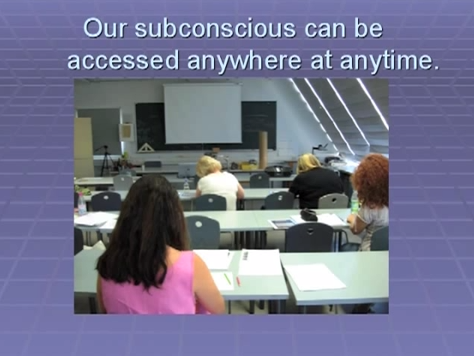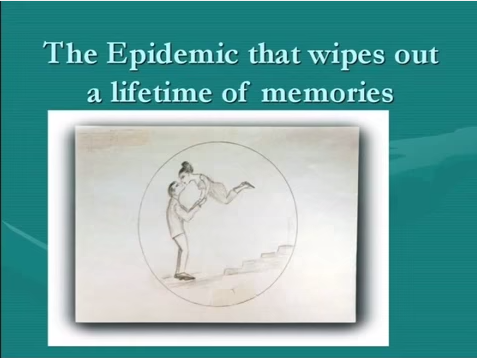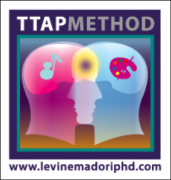This innovative book is a 9-step methodology to actively engage older adults and help preserve their cognitive functioning using this innovative, integrative approach to therapeutic art.
TherapeuticThematic Arts Programming (
TTAP) Method will create an enriching valuable manual that effectively meets older adults’ cognitive, emotional, physical, and social needs. With Therapeutic Thematic Arts Programming, older adults explore a broad theme using a range of artistic expressions, including music, dance, poetry, sculpture, and photography. Stimulating multiple areas of brain functioning, the
TTAP method promotes creativity and encourages participants to exercise their remaining strengths and abilities.
The approach also increases social interaction with its focus on dynamic group interaction. The
TTAP method provides structure to creative art therapies but also encourages flexibility and individualization. Appropriate for working with both well elders and those facing illness or disability, this integrative approach is solidly grounded in brain health research,
biopsychology, and humanistic aging theories.
Full of suggestions for themes and activities, for art and recreation therapists and for activity professionals. Its coverage of theories on aging and the benefits of creative art therapy also make it a useful text for students in the fields of therapeutic recreation and aging.
Book Reviews:
"This book brings together decades of innovation and current research in neurobiology to provide scientific grounding for recreational therapy. In addition, Dr. Levine
Madori shares her insights and enthusiasm for The Therapeutic Thematic Arts Programming methods she has developed, refined, and tested in her extensive work with older adults."
--Joan Hyde, Ph.D., Senior Fellow, Gerontology Institute University of Massachusetts and Chief Executive Officer Ivy Hall Senior Living
The
TTAP Method ™ highlights the concept that music can often stimulate memories in long-term storage where verbal conversation can fail. This seems to be behind her desire to mix art forms into the clearly delineated 9 steps of this methodology. This book, in its examination of the beneficial effects of creative therapy with elderly people and especially with those suffering from Alzheimer’s disease, adds to the growing body of knowledge that the arts connect the body and mind at any age.
–Andrew Knights, Professor Trinity College of Music, London. Review in the Journal of International Psychogeriatrics, 2008 Boston
"The underlying tenet of this book is that later life is a time for growth and development and, irrespective of one’s state of well-being, need not be devoid of opportunities for learning and celebration. The book is easy to engage with and a must for anyone using the creative arts in the field of therapeutic recreation."
--Bevan C. Grant, Ph.D., Professor of Sport and Leisure Studies, University of Waikato, New Zealand
"Inherent strengths of the publication include the author’s ability to share her expertise through numerous illustrations and examples; and the pedagogical features of the text – enumeration summaries of key points, figures support key narrative information, chapters are outlined and organized for quick reference and easy reading, and TTAP ideas are clearly presented and may be immediately incorporated into programming. The unique nature of the text is the presentation of creative arts with older adults – two minimized entities. Thus, this text fills a void in our professional literature as well as serving as a useful resource to several audiences."
--Marcia Jean Carter, Re.D., CPRP, CTRS, Associate Professor, Western Illinois University, book review in The American Therapeutic Recreation Journal
"Dr. Madori has provided a significant contribution both to the expressive arts therapy profession, as well as to the field of gerontology. Her perspective is based on a wellness model, a refreshing approach both to understanding the experience of aging and to the application of the expressive arts with older adults. Another especially thoughtful and helpful aspect of the TTAP method is its ability to encourage in-depth, long-term arts experiences rather than brief, perhaps more superficial, forms of engagement. I highly recommend this book for art therapists who work with older adults, as well as those who aspire to include other arts disciplines in their practices."
--Dr. Madeline Rugh, ATR-BC, book review in The American Art Therapy Journal
“This book aligns with growing recognition that the same old same old no longer works in the face of the growing Alzheimer’s disease epidemic, and should help propel much-needed culture change. Just as Dr. Levine Madori notes that “the expressive arts are a powerful teaching tool,” so is her book. Its compelling blend of research and practical, hands-on skills opens up the world of creative arts to both professionals and family caregivers. By emphasizing what people with dementia can do, the strength-based, person-centered TTAP Method offers a positive approach to care—and, moreover, hope—at a critical time.” - Carol Steinberg, Executive Vice President, Alzheimer’s Foundation of America
 This DVD illustrates Dr. Levine Madori actually teaching the Certification Course, with an overview of each of the 5 sections.
This DVD illustrates Dr. Levine Madori actually teaching the Certification Course, with an overview of each of the 5 sections. This one hour and 15 minute educational lecture and PowerPoint explores the topic of Art Therapy and the Subconscious. An in-depth discussion of how individuals (laypersons), therapists, and the healthcare provider can utilize simple art therapy techniques, thus providing “windows” into the inner world of any individual, is presented. This DVD can be utilized with any population, including children, adolescents, adults, individuals in skilled nursing care and those individuals afflicted with Alzheimer’s disease. Explicit definitions of imagination, guided imagery and visualization will be outlined and explained through dynamic case studies depicting individuals’ artwork and photographs. Additionally, this lecture will explore both students’ and therapists’ artwork and clearly illustrate how the subconscious mind is projected into art through vibrant imagery. This imagery allows for personal, explicit, and exploratory conversations to unfold, providing rich dialogue and opportunities for further art experiences. A body relaxation exercise and 20-minute guided imagery accompany this DVD. NOW AVAILABLE IN ENGLISH AND SPANISH
This one hour and 15 minute educational lecture and PowerPoint explores the topic of Art Therapy and the Subconscious. An in-depth discussion of how individuals (laypersons), therapists, and the healthcare provider can utilize simple art therapy techniques, thus providing “windows” into the inner world of any individual, is presented. This DVD can be utilized with any population, including children, adolescents, adults, individuals in skilled nursing care and those individuals afflicted with Alzheimer’s disease. Explicit definitions of imagination, guided imagery and visualization will be outlined and explained through dynamic case studies depicting individuals’ artwork and photographs. Additionally, this lecture will explore both students’ and therapists’ artwork and clearly illustrate how the subconscious mind is projected into art through vibrant imagery. This imagery allows for personal, explicit, and exploratory conversations to unfold, providing rich dialogue and opportunities for further art experiences. A body relaxation exercise and 20-minute guided imagery accompany this DVD. NOW AVAILABLE IN ENGLISH AND SPANISH This one hour and 12 minute educational lecture discusses in detail Therapeutic Thematic Arts Programming (TTAP Method©) and how it is specifically designed and utilized for the Alzheimer’s population. This innovative multi-modal approach was developed out of the recent neuroscience research regarding the brain, its functioning and how Art Therapy programming can best meet the needs of patients diagnosed with Alzheimer’s disease during all stages of the disease process. The TTAP Method© was created to enhance person-centered programming while stimulating the social, emotional, cognitive and physical capacities of the individual. This DVD lecture summarizes how the TTAP Method© structures the creative arts to stimulate both right and left brain functioning and enhance cognitive and psychosocial abilities. The most recent research studies will be addressed in easy to understand terminology. NOW AVAILABLE IN ENGLISH AND SPANISH
This one hour and 12 minute educational lecture discusses in detail Therapeutic Thematic Arts Programming (TTAP Method©) and how it is specifically designed and utilized for the Alzheimer’s population. This innovative multi-modal approach was developed out of the recent neuroscience research regarding the brain, its functioning and how Art Therapy programming can best meet the needs of patients diagnosed with Alzheimer’s disease during all stages of the disease process. The TTAP Method© was created to enhance person-centered programming while stimulating the social, emotional, cognitive and physical capacities of the individual. This DVD lecture summarizes how the TTAP Method© structures the creative arts to stimulate both right and left brain functioning and enhance cognitive and psychosocial abilities. The most recent research studies will be addressed in easy to understand terminology. NOW AVAILABLE IN ENGLISH AND SPANISH Living in the 21st century can be stressful on any individual, and research shows that caregivers and care providers have a high incidence of recognized levels of stress. Balancing the responsibilities of home life, work, children or parents is especially challenging and often leads to insurmountable daily stress. This one hour and 21 minute lecture discusses concrete tools that laypersons and caregivers alike can utilize on a daily basis to combat fatigue and stress. This DVD includes descriptive step-by-step relaxation techniques, meditation exercises and a guided imagery experiential. The Psychoneuroimmunology (PNI) response will be discussed, and rich examples of how the mind can directly affect the physical body will be highlighted. Definitions on the relaxation response and the stress response will be covered, providing a better understanding of the mind-body connection that directly affects overall wellness. This lecture can aid and assist the individual to retrain the mind and automatic responses to daily stress. Body relaxation exercises and a 20-minute guided imagery accompany this DVD. NOW AVAILABLE IN ENGLISH AND SPANISH
Living in the 21st century can be stressful on any individual, and research shows that caregivers and care providers have a high incidence of recognized levels of stress. Balancing the responsibilities of home life, work, children or parents is especially challenging and often leads to insurmountable daily stress. This one hour and 21 minute lecture discusses concrete tools that laypersons and caregivers alike can utilize on a daily basis to combat fatigue and stress. This DVD includes descriptive step-by-step relaxation techniques, meditation exercises and a guided imagery experiential. The Psychoneuroimmunology (PNI) response will be discussed, and rich examples of how the mind can directly affect the physical body will be highlighted. Definitions on the relaxation response and the stress response will be covered, providing a better understanding of the mind-body connection that directly affects overall wellness. This lecture can aid and assist the individual to retrain the mind and automatic responses to daily stress. Body relaxation exercises and a 20-minute guided imagery accompany this DVD. NOW AVAILABLE IN ENGLISH AND SPANISH This one hour and 9 minute educational lecture explores the Theory of Object Relations and further clarifies how objects in our daily lives such as sea shells, toys, cups, and photographs can be utilized in therapeutic programming for individuals in any stage of life and for those individuals currently living in Skilled Nursing Facilities. An in-depth discussion of how both long-term and short-term memories can be accessed through the use of objects, thus exposing the individual’s past or present life in fuller detail, is presented. The sharing of personal information through object relations theory enables the therapist and the individual to connect on a deeper level, which facilitates powerful and meaningful programming. Case studies on a number of individuals will be explored through their own words and art images. This DVD comes with a body relaxation exercise, as well as guided imagery, to use with your own populations. NOW AVAILABLE IN ENGLISH AND SPANISH
This one hour and 9 minute educational lecture explores the Theory of Object Relations and further clarifies how objects in our daily lives such as sea shells, toys, cups, and photographs can be utilized in therapeutic programming for individuals in any stage of life and for those individuals currently living in Skilled Nursing Facilities. An in-depth discussion of how both long-term and short-term memories can be accessed through the use of objects, thus exposing the individual’s past or present life in fuller detail, is presented. The sharing of personal information through object relations theory enables the therapist and the individual to connect on a deeper level, which facilitates powerful and meaningful programming. Case studies on a number of individuals will be explored through their own words and art images. This DVD comes with a body relaxation exercise, as well as guided imagery, to use with your own populations. NOW AVAILABLE IN ENGLISH AND SPANISH This one hour and 14 minute educational lecture and PowerPoint details the functions of specific brain regions in an easy to understand format. A discussion of the responsibilities and characteristics of the right and left brain will be analyzed from a neuroscience perspective and then correlated to the power that the creative arts have on brain stimulation. A concise overview of all of the stages of Alzheimer’s disease will be presented in conjunction with just how significant the role of activities are in stimulating and increasing social interactions, emotional well being, cognitive stimulation and physical activities. Included in this educational lecture series are comprehensive summaries on current empirical research which have studied the impact that activities have on overall quality of life, cognition and psychosocial elements. Finally, a discussion of how the TTAP Method© has been created in order to put research into practice, with regard to brain and individual wellness, will be presented. NOW AVAILABLE IN ENGLISH AND SPANISH
This one hour and 14 minute educational lecture and PowerPoint details the functions of specific brain regions in an easy to understand format. A discussion of the responsibilities and characteristics of the right and left brain will be analyzed from a neuroscience perspective and then correlated to the power that the creative arts have on brain stimulation. A concise overview of all of the stages of Alzheimer’s disease will be presented in conjunction with just how significant the role of activities are in stimulating and increasing social interactions, emotional well being, cognitive stimulation and physical activities. Included in this educational lecture series are comprehensive summaries on current empirical research which have studied the impact that activities have on overall quality of life, cognition and psychosocial elements. Finally, a discussion of how the TTAP Method© has been created in order to put research into practice, with regard to brain and individual wellness, will be presented. NOW AVAILABLE IN ENGLISH AND SPANISH